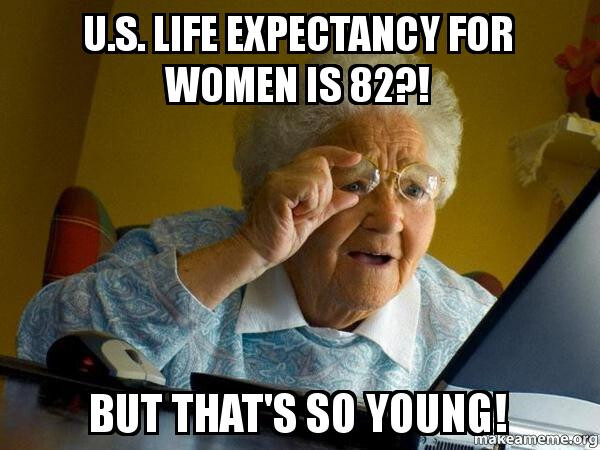Depends on the technology.
One can get a real big amount of life extension from say $1,000,000 CAR-T therapy or getting an organ transplant by gaming the system with tons of money (legally, and sometimes illegally).
Depends on the technology.
One can get a real big amount of life extension from say $1,000,000 CAR-T therapy or getting an organ transplant by gaming the system with tons of money (legally, and sometimes illegally).
So, Tuscany, Corsica, Norway, SW of France, NW Portugal all look like good places to live, to me!
That’s Galicia, not Portugal
also that region of greece is Ioannina (regional unit) - Wikipedia / Epirus
I’d note the US and Japan have the most confirmed centenarians and supercentenarians though. Japan being the most per capita
America has greater inequality than most other countries, but resourceful people know how to make best use of inequality. Per capita numbers are not great when you want to look for the most resouceful people.
It also matters that America has way lower air pollution than Europe, esp b/c it’s way easier to eat healthy than escape air pollution
We are overweight and underexercised.
Seems like the chart is roughly correlated with where fish is a dietary staple. More sardines & smoked salmon for all ![]()
Most memorable line I read from the book American Shaolin:
Chinese classmate to American Shaolin - something like “How come it is the poor people who are fat in America?”
The estimates confirm the trend for longevity: lifespans are getting longer.
Globally, life expectancy has increased by more than 6 years between 2000 and 2019 – from 66.8 years in 2000 to 73.4 years in 2019. While healthy life expectancy (HALE) has also increased by 8% from 58.3 in 2000 to 63.7, in 2019, this was due to declining mortality rather than reduced years lived with disability. In other words, the increase in HALE (5.4 years) has not kept pace with the increase in life expectancy (6.6 years).
So by living those 20 years, globally, we got about 30% back! I hope that trend continues.
I also find it interesting that the USA has a very short HALE - Healthy Lifespan - ranked 70th just behind Iran and most South American countries. Japan and Singapore have the highest followed by most of Europe. Canada has the highest in the Americas.
The rest of the world is like…

The United States just has so many extra risk factors. Obesity rates are 2x higher than the EU, number of hours spent in cars is 2x higher than the EU, illicit drug use rate is 2x higher than the EU, gun violence is 22x higher than the EU… it’s amazing that our life expectancy is as good as it is, really.
Yay, im Norwegian so this looks good, maybe the rapa/acarbose and astaxanthin will get me to 120+ ![]()
![]()
Full article in the Financial Times: https://archive.ph/brd5T
Economic growth isn’t the only way to compare how well countries are doing
This is hardly a new question. People have argued for decades that GDP is an insufficient measure of national prosperity or living standards, but attempts to come up with something better tend to end up rather mushy.
It would be better to make it simple. For my money, life expectancy is the most important supplementary measure of how a country is doing. It is a solid quantitative metric based on mortality rates, and few things matter more than life and death. It is also influenced by other factors people care deeply about, such as the treatment of babies and mothers, the quality of food, healthcare, education, pollution, jobs and crime. One could argue that “healthy life expectancy”, a measure of the years people live in decent health, would be even better, but the data available right now is too subjective to compare trends robustly across countries.
Of course, policymakers do care about life expectancy already. But what might the world look like if politicians compared these statistics as obsessively and anxiously as they do their GDP trends? By this measure, the US would not be envied by the rest of the rich world. Even as its economy grows, the life expectancy of its people falls further behind that of its peers. In 1980, life expectancy was roughly the same in the US as it was in Italy and France, and higher than in the UK and Germany. It had sunk to the bottom of that pack by the 1990s, and now it is being overtaken by much poorer countries in terms of GDP per head. For all the ink spilled about when (or if) Chinese GDP will overtake America’s, Chinese life expectancy has already quietly achieved that feat(opens a new window).
And to think that Turkish men are very heavy smokers too
GIven how wildly different lifestyle factors are in the US vs the very healthiest countries, the fact that there is only about 6-7 years difference between the US and Japan really drives home how much aging itself is the number one culprit here. Not that 6 years is anything to shake a stick at, but you’d think a whole country totally doing (on average) zero of the things you’re supposed to do to be healthy in older years… you’d think that would be an even bigger gap.
Actually, it’s more like 8 years, not 6. Considering that’s almost a decade, that’s pretty significant!
In this article, I’ll dive into the basics on how healthcare works in the five healthiest countries worldwide—Spain, Italy, Iceland, Japan, and Switzerland. By better understanding the healthcare systems of these countries, perhaps we can gain insights into successful models that prioritize the well-being of their people.
The obesity rate pretty much says it all.